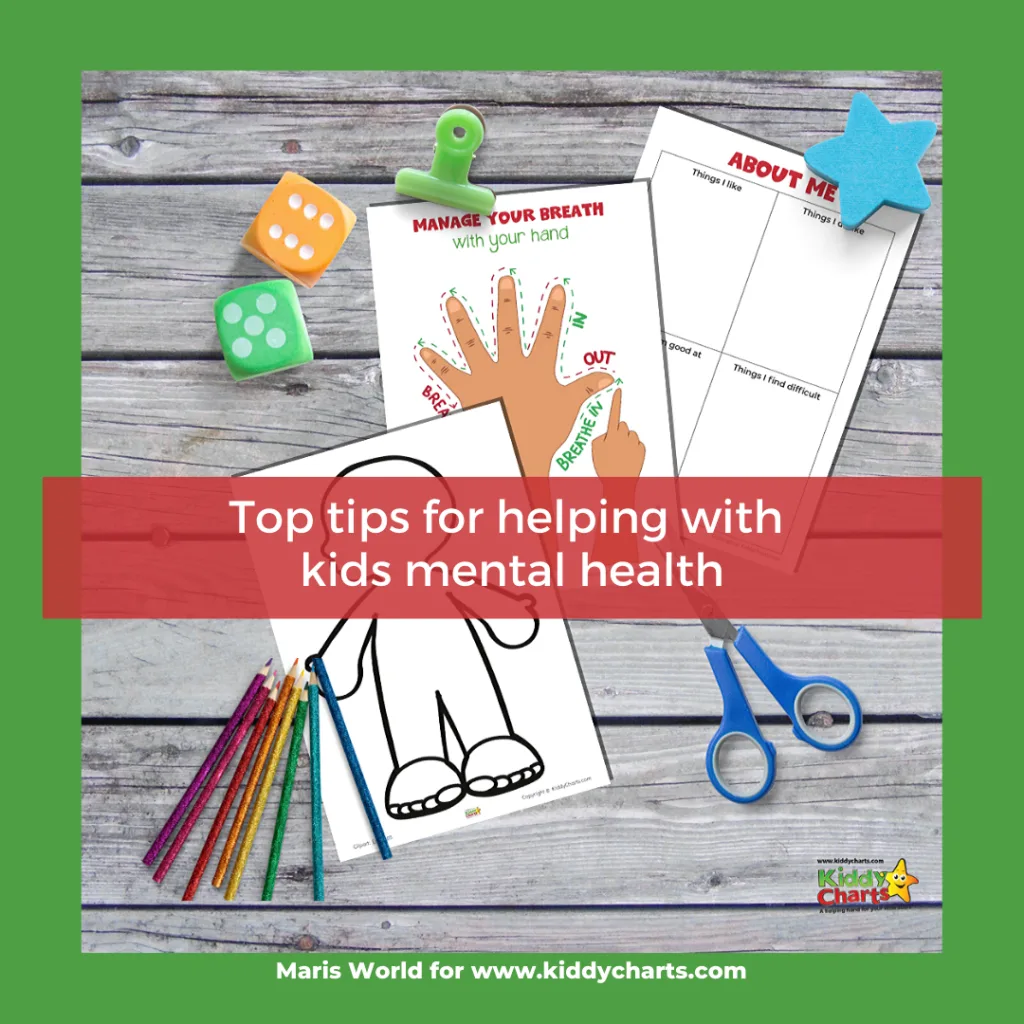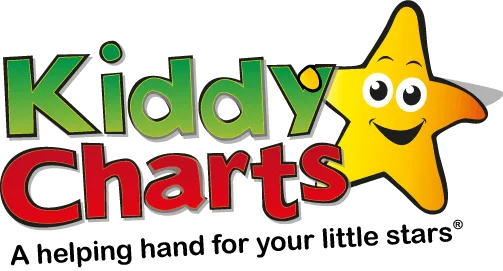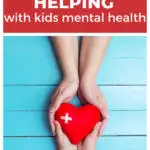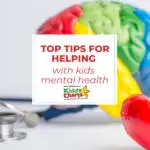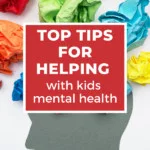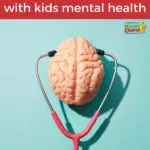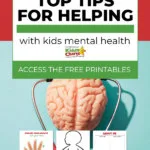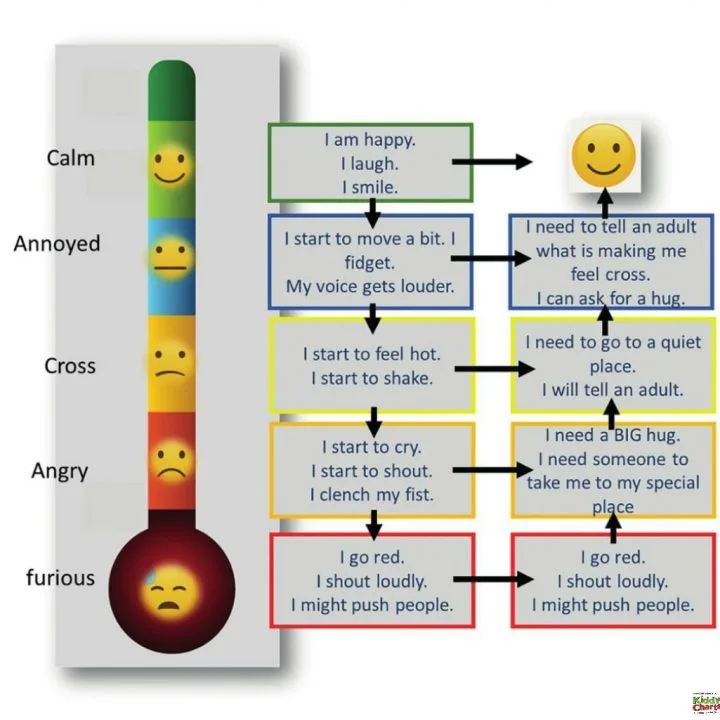Today we have a very apt post from Mari’s World in our 31 Days of Learning talking us through some ideas for how you can help your kids mental health and wellbeing. Thanks so much to Mari for these wonderful ideas!
It’s hard being a parent isn’t it? Nothing about raising children is as easy as it was in ‘our’ day. Not only are we caring for their physical wellbeing – making sure they eat well, practise sport and are developing into human’s we can be proud of, but today’s parents have to make time for our kids mental health and wellbeing, and help to keep them positive. For many that’s a scary minefield to navigate. Particularly in trying times.
Social media has exploded into our lives and no parent can ignore the enormous influence it has on our lives. With levels of mental health issues in young children and teenagers shooting through the roof (so fast the NHS cannot keep up), self harm figures on a constant increase and suicide becoming the latest ‘norm’, we need to have some tools and an action plan under our belt to help us raise mentally balanced children in the 3rd millennium.
My work as a teaching assistant has opened my eyes to the enormity of this challenge and I want to share a few exercises I do in the classroom which help children recognise their emotions and teaches them how to manage them.
About me
“All humans compare themselves to each other. It helps us understand who we are and what we’re good at.” (Paula Nagel) Comparisons open up conversations and allows us to reflect on various areas of our personality and realise that it’s ok, we’re all different.
However, it is easy for social comparison to get out of control – by counting likes and followers for example.
Exercise
It is a good exercise to bring the thinking back to ‘me’; recognising what I am good at, comparing myself now to myself of last year and noticing where I have improved.
It’s a good idea to write a letter to my future self – where do I want to be this time next year? Or at the end of the school year.
Take a piece of A4 paper and divide it into quarters. Use each quarter for a separate section:
- Things I like,
- Things I dislike,
- Things I am good at, and
- Things I find difficult.
We have also provided a template here with the headings that can help you out.
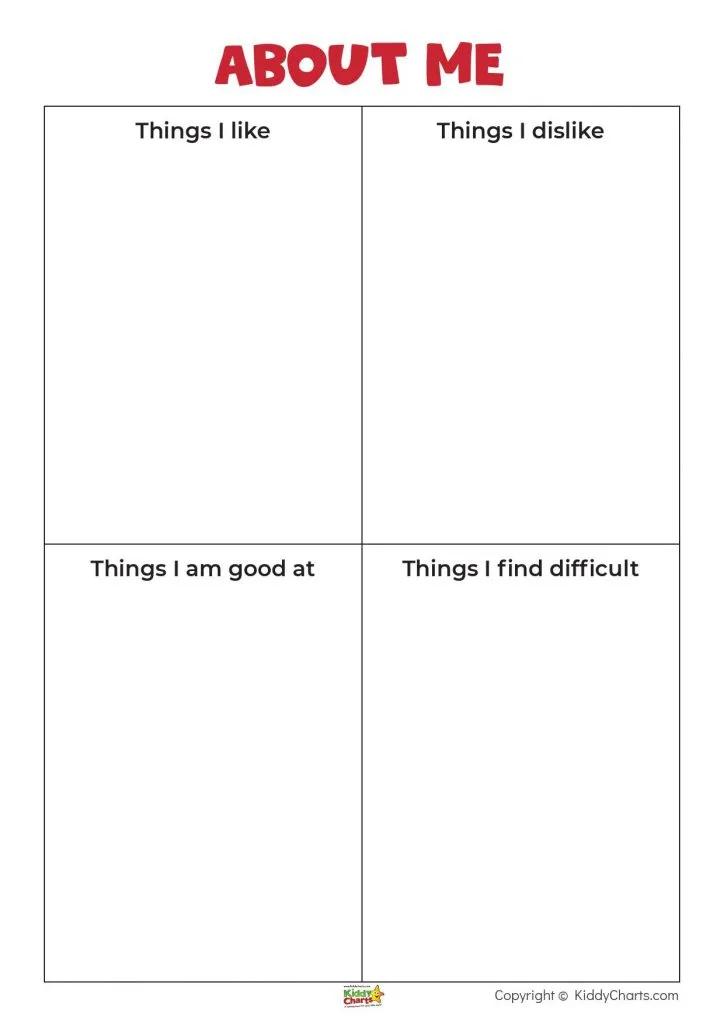
If there is space, ask the child to note down (or underline in one colour) things that have changed over the past year. Take a different colour and ask the child to think about what they would like to improve or change over the next year.
This exercise shows that we are all constantly learning and improving. Nothing is fixed and everything can change.
Recognising my emotions
Some children can really struggle to cope with their emotions and this can cause growing anxiety and even panic attacks. It is therefore a good exercise to teach the child to recognise their emotions as they are happening, by doing this, they can then learn how to manage them and defuse if necessary.
Exercise
One exercise I have used in class is to offer a template of a body on A4 paper. We have provided one here for you to download.
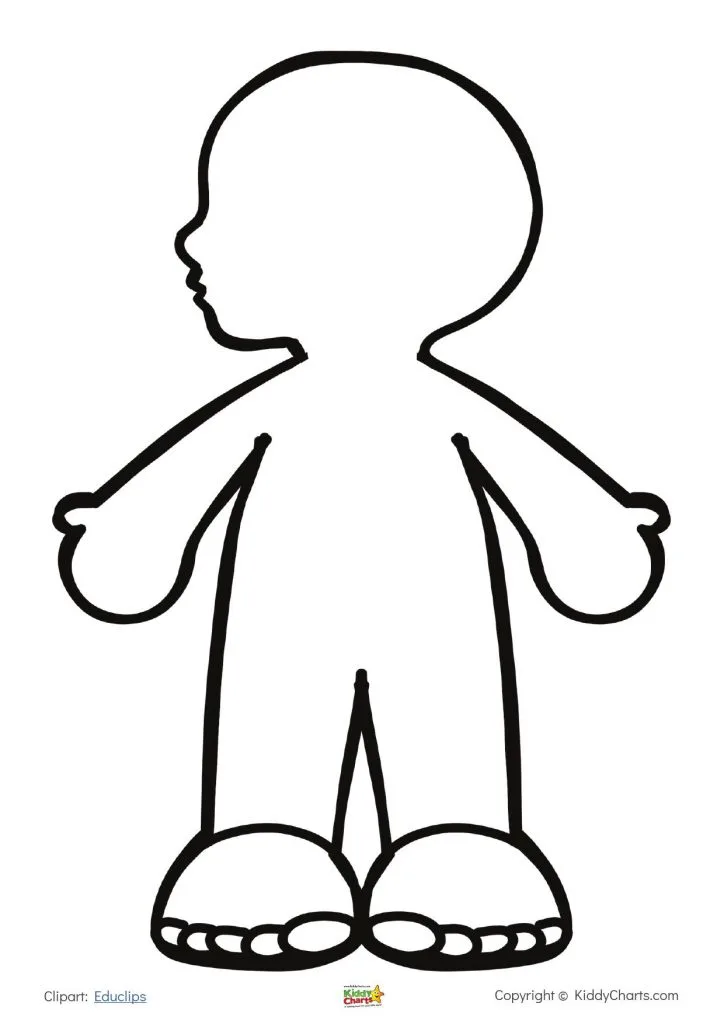
Colour in small boxes as a key to various emotions:
- Red = anger,
- Yellow = jealousy,
- Blue = sadness, and
- Purple = anxiety.
Ask the child to imagine they are angry and think about where in their body that emotion is expressed. Often it will be hands (hitting), feet (kicking), head and so on. Anxiety may be stomach and sadness could be heart and eyes (tears). Once the child has recognised how their body reacts to various emotions, it is then time to ask the child to think about how they could manage that reaction:
- When I am angry, I am going to …. (take five deep breaths – see below), and
- When I am anxious, I am going to… (do the see, hear, smell, touch, taste exercise – see below too)
Breathing exercises
The simplest breathing exercise to teach children is the five point hand one. Hold one hand in front of you with the fingers open wide.
With the index finger of the other hand, start at the base of the thumb and slowly run your finger to the tip of your thumb, as you do, take a nice deep breath in. As your finger runs down the other side of the thumb back to the palm, breath slowly out. Continue up and down each finger until you reach the other end of the hand. This simple exercise has the power to clear your mind, quieten your breathing and centre you in the here and now.
Here is a print out to help children understand this a little more.
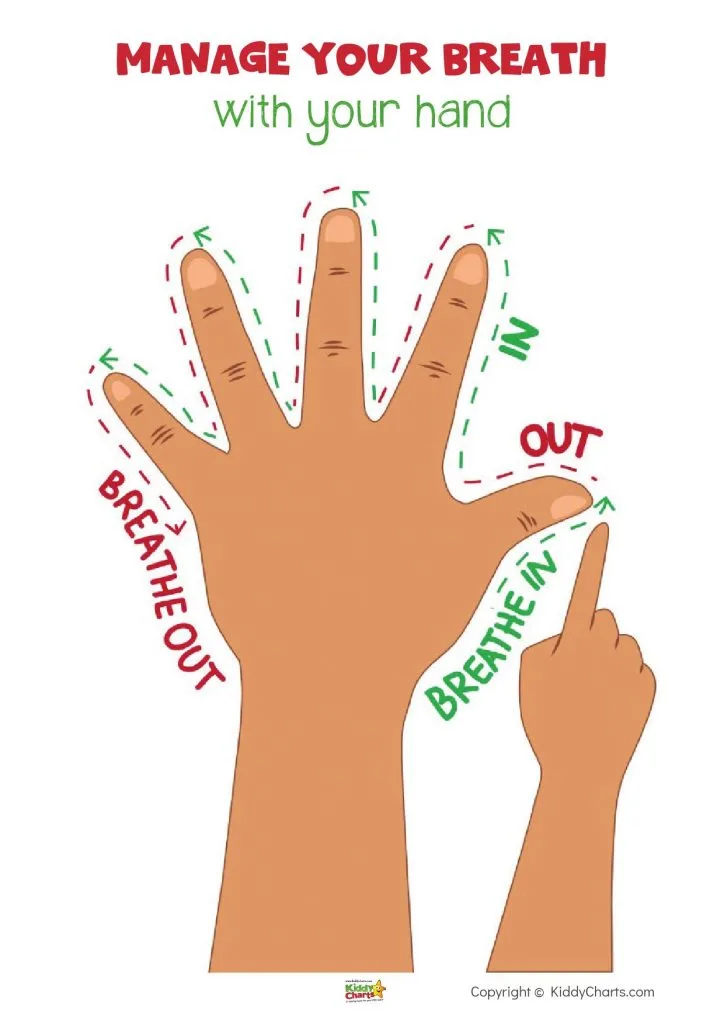
Here and Now
When things are getting tough and a child feels anxious about the future it’s good to bring them back to the here and now and a great and easy way of doing that is to ask them to focus on
- Five things I can see,
- Four things I can hear,
- Three things I can smell,
- Two things I can touch, and
- One thing I can taste.
Negative talking vs positive talking
Keep an eye out for negative thinking. Youngsters are prone to seeing everything black and white.
When they come up with something negative, encourage them to change their view filter.
Get them to look at the discussion from another point of view and argue the case from the positive side.
Books for parents and teens
- Blame my brain – Nicola Morgan
- Positively teenage – Nicola Morgan
- Create Your Own Happy – Penny Alexander and Becky Goddard Hill
- Be Happy Be you – Penny Alexander and Becky Goddard Hill
- The Mental Health and Wellbeing Workout for Teens – Paula Nagel
Websites
- Young Minds – https://youngminds.org.uk/
- Action for Children – https://www.actionforchildren.org.uk/
- Place 2 Be (Children’s mental health week) – https://www.place2be.org.uk/
This is just a fraction of the various exercises you can do to help build a solid, happy mental health in children and I hope the books and websites prove useful too. Look out for hashtags to follow on Instagram and don’t stop the conversation with your growing teen.
We are sure you agree that there are some great ideas in here on how to help with kids mental health and wellbeing. If you need more advice for anxiety in kids, or tools, then do check out some of the other resources on the site too.
Anxiety in kids
Ideas from KiddyCharts to help with kids expressing themselves, and focusing on improving mental health.
Anxiety in kids: Download these tools today to help your kids to talk
Some tools for you to help alongside these ones we have already provided.
Care 4 Me Reward Charts – Reduce separation anxiety today!
If your child suffers from separation anxiety - why not try our free care charts too?
Free worry tree to help ease your kids fears
A worry tree to help younger children voice, and externalise their anxieties.
5 ways to use reading to help anxiety in kids: Includes FREE friendship bookmarks and book bundle giveaway #TimeToRead
Using reading to help reduce anxiety too.
We’d love to have you back so sign up if you can!
See you again soon,
Helen
